Leading the Way
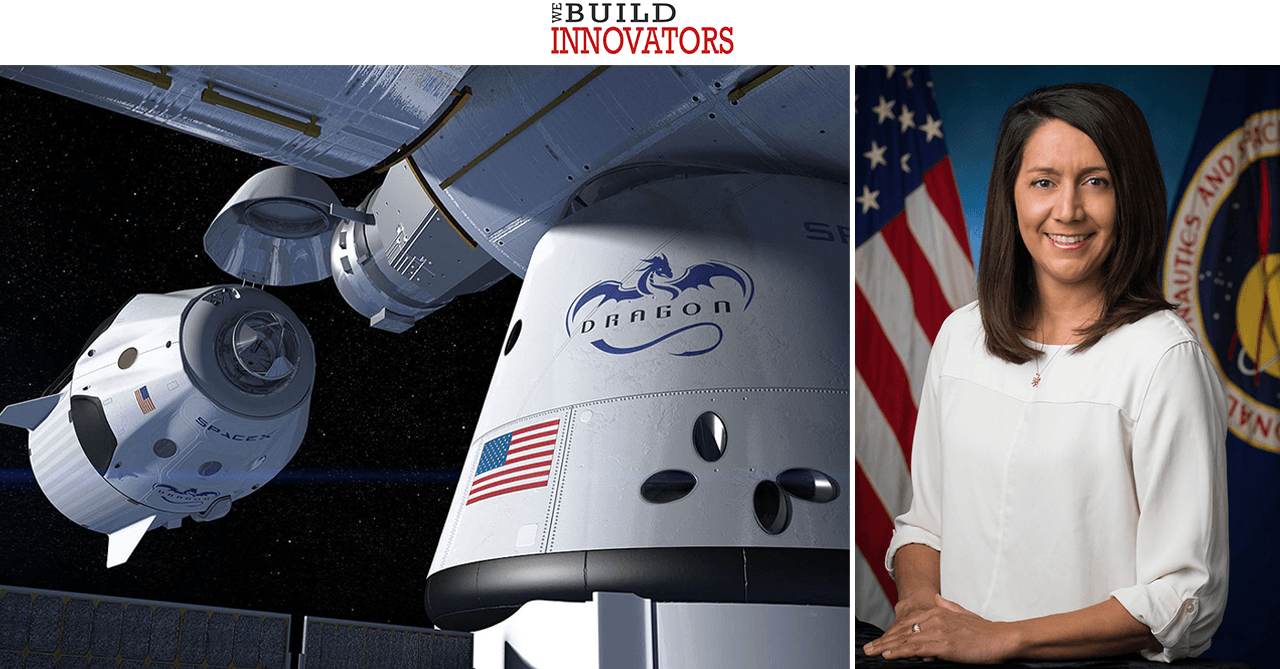
NASA scientist Ginger Kerrick (photo, above right), who also is a Texas Tech University System Board of Regents member and a Texas Tech University alumna, was crucial to the launch of SpaceX (artist's illustration, above left).
Regent Ginger Kerrick Played Pivotal Role in SpaceX Launch
NASA Scientist & TTU Alumna in Charge of SpaceX Training and Safety.
6.8.2020 by Glenys Young
Fifty years ago, in the middle of the space race, the United States beat Russia by becoming the first nation on Earth to put a man on the moon. Since the end of NASA's Space Shuttle program in 2011, however, American astronauts have had to hitch rides to the International Space Station aboard the Russian Souyz spacecraft.
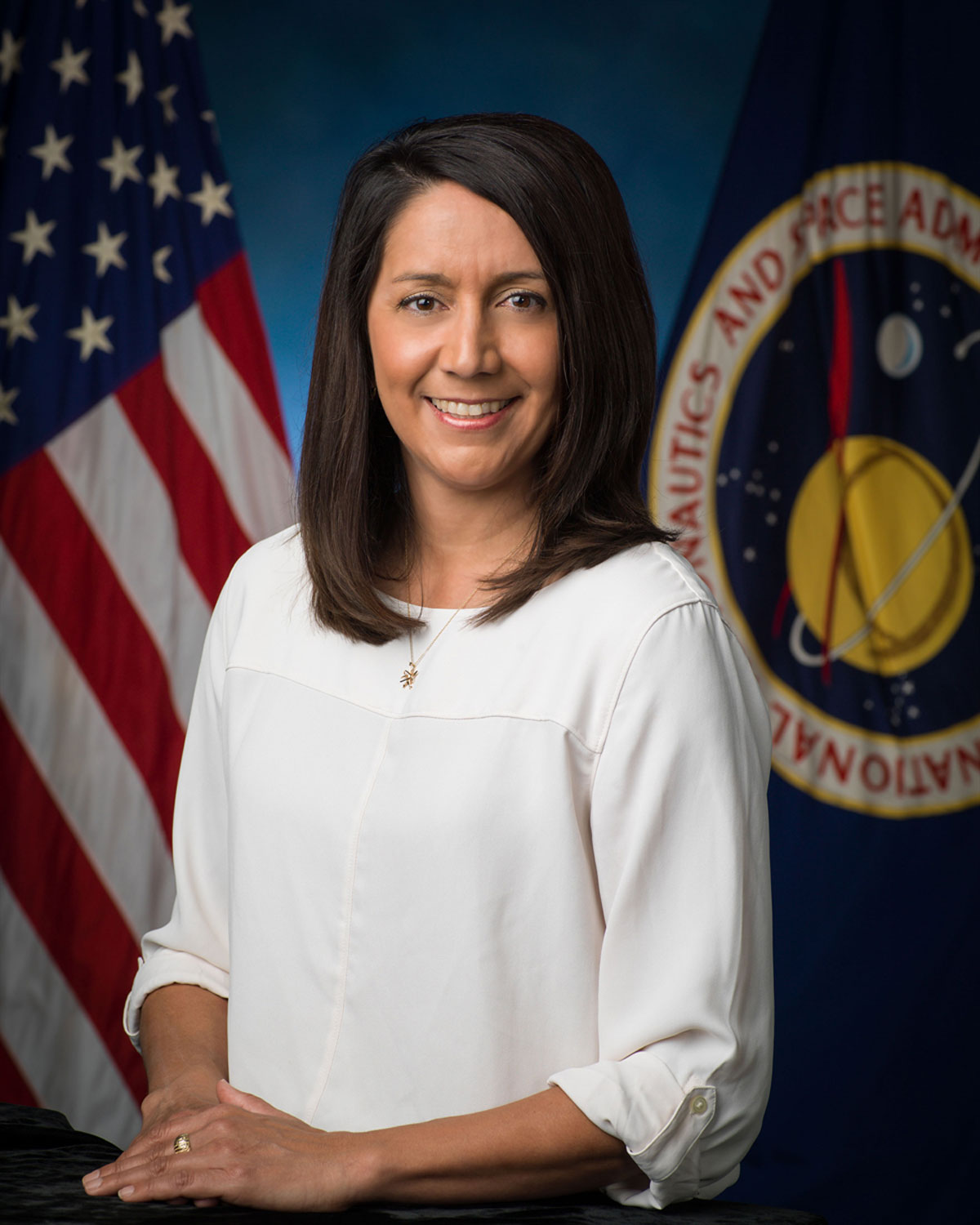 In many ways, it's been a near decade-long blow to our national pride, said Ginger
Kerrick, deputy director of the Exploration Integration and Sciences Directorate at
NASA, a member of the Board of Regents for the Texas Tech University System and Texas
Tech University alumna.
In many ways, it's been a near decade-long blow to our national pride, said Ginger
Kerrick, deputy director of the Exploration Integration and Sciences Directorate at
NASA, a member of the Board of Regents for the Texas Tech University System and Texas
Tech University alumna.
To rectify this, the U.S. apparently borrowed Texas Tech's motto: From here, it's possible.
On May 30, 2020, two American astronauts blasted off from American soil aboard an American craft. The launch signifies what some are calling the dawn of a new era for spaceflight in the U.S. because it wasn't aboard a NASA craft, but rather, one privately designed and built by SpaceX: the Crew Dragon.
Crewmembers Bob Behnken and Doug Hurley safely reached orbit and docked with the International Space Station on May 31, 2020.
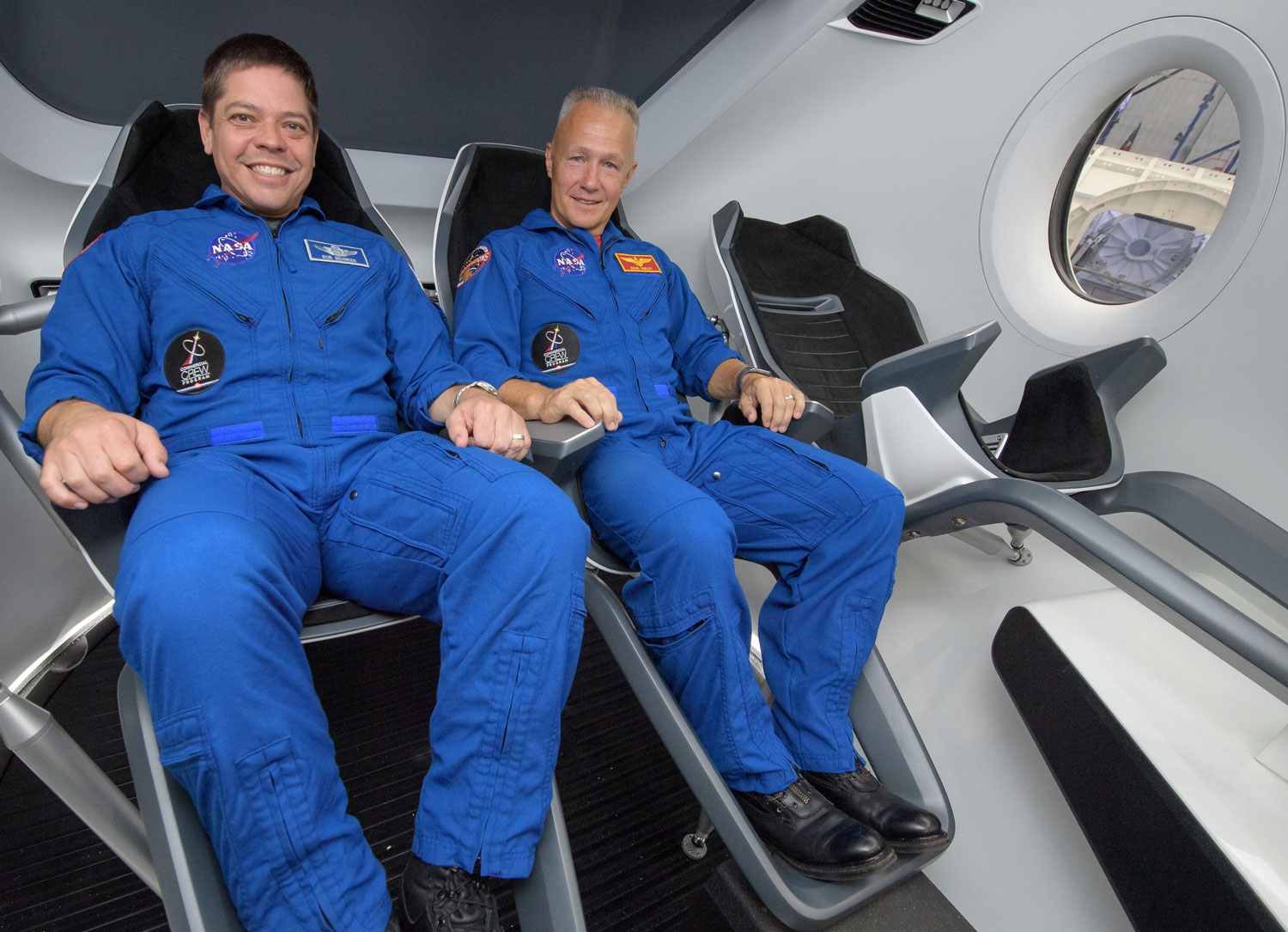
NASA astronauts Bob Behnken, left, and Doug Hurley pose inside a mockup of the SpaceX Crew Dragon at Johnson Space Center in 2018. On May 30, 2020, they blasted off inside the real thing and are now aboard the International Space Station.
"Right now, given the current pandemic, the world is looking for something good, and I think they were open to hearing a good news story just because of that," Kerrick said. "But when you have the combination of today's current environment and a recognition that the U.S. is now back to having the ability to launch its own crew members from its own soil, I think was a moment where people recognized the significance of it.
"If you think about it, the last time we had a first launch of a U.S.-built vehicle with American crews on board was 1981, when we first had that shuttle test flight. So it's been a long time in the making, and people can be proud."
Public-Private Partnership
A long time in the making is no understatement. NASA first put a call for companies interested in developing a commercial space industry in 2010. Four years later, Boeing and SpaceX were hired to manufacture the next crewed vehicles: the Starliner and the Crew Dragon, respectively. In 2015, flight crews were assigned.
"Bob and Doug have been assigned to this mission for the last five years," Kerrick noted. "That's a long time. Normally, for the Space Station, we assign people about two years in advance. Since we were manufacturing a brand new vehicle, we wanted to get those guys assigned pretty early on so they could weigh in, meet up with the designers, meet up with the people who were looking to build the crew displays and the crew module and help both SpaceX and Boeing take advantage of our 50 years of human spaceflight experience."
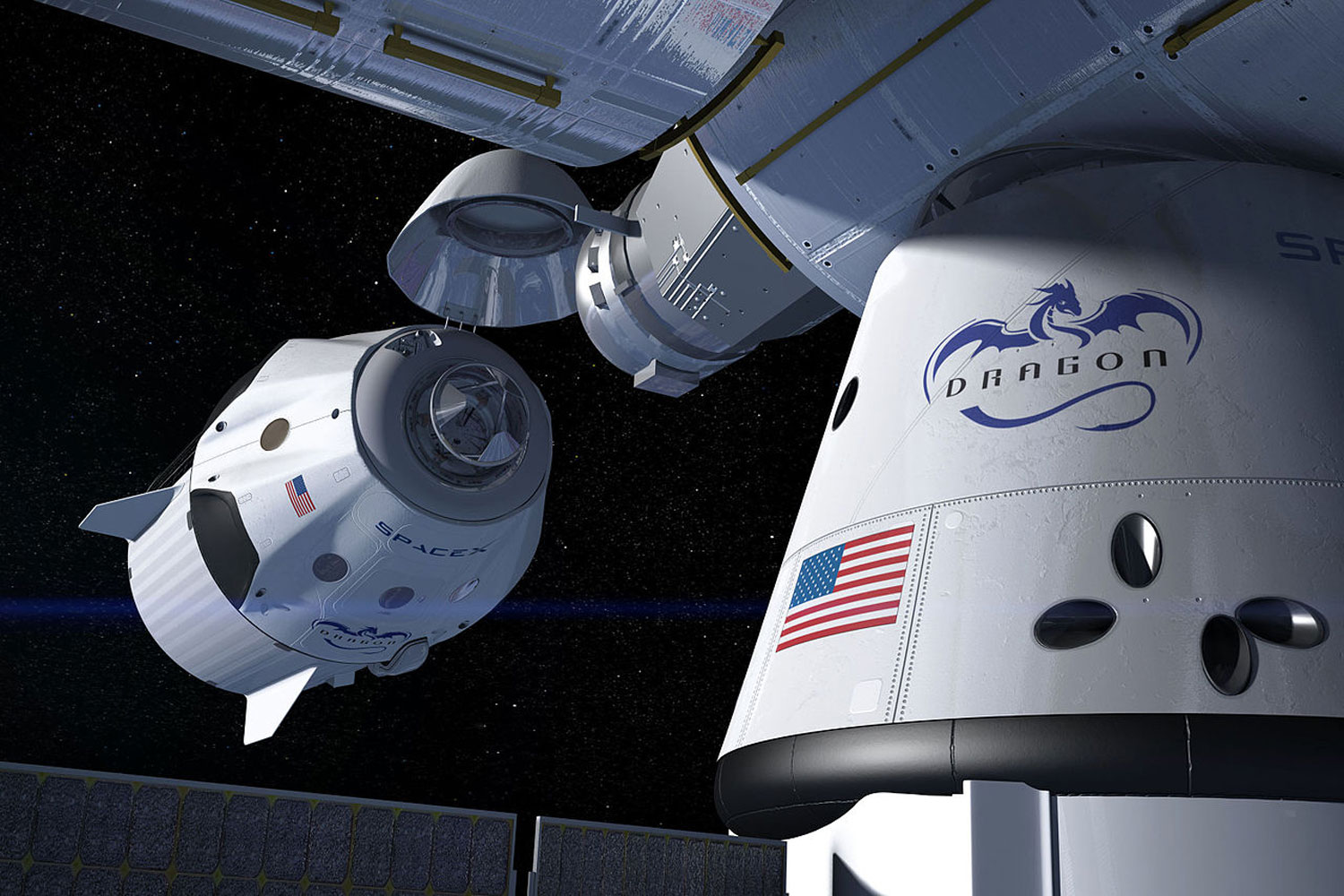
Artist's illustration of the SpaceX Crew Dragon.
Along the way, NASA worked closely with the companies, holding consultations and joint simulations intended to capitalize on each partner's strengths.
"SpaceX was trying a new design on their parachute system, so we had our NASA engineers, who've had experience with Apollo and with the parachutes on the Orion vehicle, available to help them," Kerrick said. "We partnered a lot to advise them, assess them and help them move forward with their new design. We are truly trying to help SpaceX take advantage of NASA's human spaceflight history, but we're also encouraging them in their efforts to find innovative solutions to some of our standard human spaceflight problems."
Kerrick's Role
Although Kerrick is now in the Exploration Integration and Sciences Directorate, up until May 6, she was a division chief for the Flight Integration Division, meaning she played an integral role in the training that went into making this launch a success.
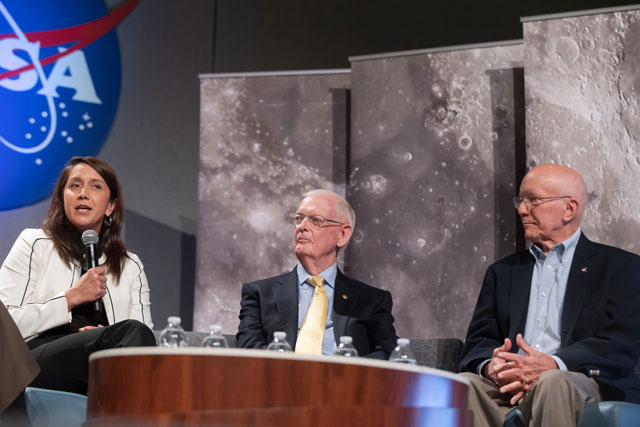
Kerrick with Apollo Flight Director Glynn Lunney, center.
"My responsibilities were operational safety, training both the crew and the flight control team; oversight and training for the SpaceX personnel as well; the operational readiness for personnel who are required to support launch; and the entire landing recovery and rescue," she explained. "It falls squarely on my shoulders to work with the Commercial Crew Program and SpaceX to ensure our astronauts returned safely, not only to Earth, but all the way back to their front doors."
As you might expect, training procedures became more difficult with the COVID-19 pandemic.
"Particularly for the last three months of their training," Kerrick said, "I had to meet with every individual who needed to conduct a lesson with the crew and understand, 'Can you do this lesson remotely? If I give you some cameras, can you stand at least 6 feet away? Can I move your workstation away from the crew members?' We did this for every single class to make sure we were doing our due diligence and not unnecessarily exposing them."'
Safety Measures
Kerrick began her new job on the same day Behnken and Hurley went into quarantine in preparation for the launch.
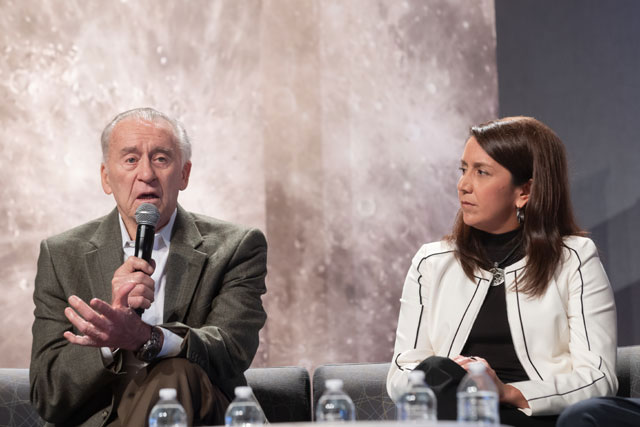
Kerrick with Apollo astronaut Walt Cunningham.
Most people around the world are now most familiar with quarantining because of COVID-19, but astronauts have been accustomed to the procedure for decades. They typically quarantine for two weeks before every spaceflight so they don't inadvertently bring disease into the confined quarters of a space capsule.
But while COVID-19 did change the quarantine procedures for this flight, it was probably not in the way you might expect.
"Normally we have a quarantine facility here at NASA that we put the crews in about two weeks before a launch," Kerrick said. "This time, we had them start quarantine three weeks before, but we allowed them to do an at-home quarantine. The only reason we were able to do that was because their families were already on home quarantine. If their children had been going to and from school, they wouldn't be allowed to see their children or quarantine with their children.
"So COVID-19 afforded us an opportunity that is different than most scenarios, where they could be at home with their families quarantined, and then go to Kennedy Space Center in Florida where they stayed in the astronaut crew quarters."
Kerrick, whose previous role also had her in charge of the quarantine facilities, set up a separate quarantine facility for Mission Control employees in Houston.
"If you think about it, the crew has been in training for five years, but the flight control teams, and particularly the flight director—the person who leads the mission—also need to take great care with their health," she said. "So, I afforded them a place to stay during the mission so they wouldn't go home and be exposed to potential risks from their families either."
No Time to Rest
With Behnken and Hurley now aboard the International Space Station, the work at NASA continues.
"This was a demonstration flight, so right now, people on the ground are looking at all the data we were able to obtain from launch and docking and trying to understand if both the launch vehicle and the spacecraft operated as expected," Kerrick said. "Assuming all of that goes well, we could get to a point where we can certify this vehicle and declare it ready for use for our regular crew rotations.
"How long will Bob and Doug stay up there, is a question, right now. It depends on our analysis of this data. There are some discussions we need to have with the people at NASA headquarters, but if they are going to stay there at least through the end of June, we have work for them to do."
For Kerrick, who has been at NASA for 28 years, it's a proud moment, but it's also not a moment to sit back and reflect—it's a moment to look forward.
"My friends have been saying, 'Oh, it's great that NASA is back,' but NASA hasn't gone anywhere," she emphasized. "We're coming up on the 20-year anniversary of having humans continuously in space. I'm happy this particular event has garnered public attention for NASA, but I also remind folks this is just one of the many significant accomplishments we have had over the last few years, and there are so many more accomplishments to be had."
College of Arts & Sciences
-
Address
Texas Tech University, Box 41034, Lubbock, TX 79409-1034 -
Phone
806.742.3831 -
Email
arts-and-sciences@ttu.edu
